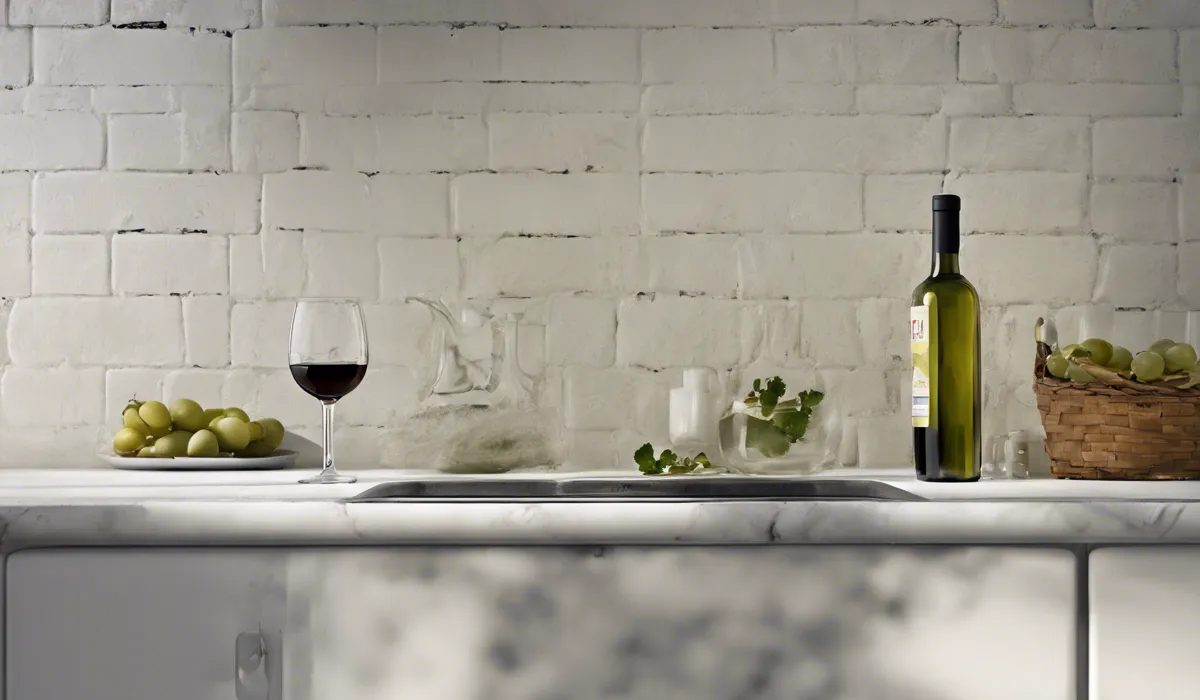Yes, white wine vinegar can kill mold due to its acidic properties. It’s effective against various mold species on surfaces. Apply directly, let sit, then scrub and rinse. For persistent mold, multiple applications may be necessary.
The Science of White Wine Vinegar and Mold

Understanding Mold and Its Various Types
Mold is a type of fungus that thrives in damp, warm environments. It can grow on almost any surface, from bathroom walls to forgotten food in the refrigerator.
Mold reproduces through tiny spores that float through the air. These spores are often invisible to the naked eye.
There are multiple types of mold, with some being harmless while others can cause allergies, respiratory issues, or even toxicity.
Common mold types include Aspergillus, Cladosporium, and Stachybotrys, often known as black mold.
Properties of White Wine Vinegar
White wine vinegar is known for its distinctive, tangy flavor, which comes from its acetic acid content.
Beyond its culinary uses, this acidity gives white wine vinegar antimicrobial properties, making it a natural disinfectant.
The acid disrupts microbial cell membranes, leading to the death of the organism. This is why it can be an effective agent against mold.
How White Wine Vinegar Affects Mold Spores?
When white wine vinegar comes into contact with mold spores, the acetic acid penetrates and can disrupt the function and structure of the spores.
This disrupts the growth and reproduction of the mold. As a result, applying white wine vinegar to moldy areas can kill existing spores and inhibit further growth.
Comparing White Wine Vinegar to Other Vinegars
While white wine vinegar is effective against mold, it’s not the only type of vinegar that can be used for this purpose.
Other vinegars like apple cider vinegar and distilled white vinegar also have high acidity levels and can kill mold.
However, white wine vinegar often has a more pleasant smell and can be less harsh on surfaces than distilled white vinegar.
Using White Wine Vinegar to Combat Mold

Preparing the White Wine Vinegar Solution
Before you tackle the mold, you’ll need to prepare your white wine vinegar solution. Typically, you can use the vinegar undiluted for maximum strength.
However, for sensitive surfaces or for a less intense smell, you can dilute the vinegar with water in a 1:1 ratio.
Step-by-Step Guide to Applying Vinegar
Start by donning protective gloves and a mask, especially if you’re dealing with a lot of mold.
Spray the white wine vinegar solution directly onto the moldy area, ensuring it’s thoroughly soaked. Let the vinegar sit for at least an hour to penetrate the mold spores.
Then, scrub the area with a brush to remove the mold. Finally, rinse the area with water and dry it completely to prevent mold from re-growing.
Safety Precautions and Best Practices
While using white wine vinegar is safer than many chemical alternatives, you should still take precautions.
Ventilate the area well, wear protective gear, and never mix vinegar with bleach as it creates toxic chlorine gas.
Additionally, always test the vinegar on a small inconspicuous area first to ensure it doesn’t damage the surface.
Limitations of White Wine Vinegar
While white wine vinegar is effective against many types of mold, it may not work for all species or on all materials.
Some porous materials, like wood, can absorb the vinegar, which might not reach deeply embedded mold.
In such cases, multiple applications may be necessary, or alternative methods might be required.
Alternatives and Additional Measures for Mold Prevention and Removal

Natural Remedies Against Mold
There are several natural remedies that can be effective against mold. Tea tree oil is a potent antifungal and can be diluted with water to treat moldy areas.
Baking soda, often mixed with water or vinegar, can also be used to scrub away mold and neutralize odors.
When to Opt for Commercial Mold Removal Products?
For persistent mold problems or large areas affected, commercial mold removal products may be necessary.
These products are formulated to tackle tough mold infestations and often contain stronger antimicrobial agents.
Preventative Measures for Mold Control
To prevent mold growth, control moisture levels in your home by using dehumidifiers or fans, fix leaks promptly, and ensure good ventilation, especially in areas like bathrooms and kitchens. Regularly clean and dry areas where mold is likely to grow.
Knowing When to Call Professional Remediation Services
If mold has infiltrated your home’s structural elements or if you have health concerns, it’s time to call in the professionals.
Expert remediation services have the tools and knowledge to safely and effectively remove mold from your home.
FAQs About White Wine Vinegar and Mold
Can white wine vinegar effectively kill mold?
Yes, white wine vinegar can effectively kill mold due to its acidic properties, making it a suitable option for mold remediation on various surfaces.
How do I use white wine vinegar to kill mold?
Apply white wine vinegar directly to the moldy area, allow it to sit for a while to penetrate the mold, then scrub the area and rinse it off.
Is white wine vinegar a good choice for all types of mold?
White wine vinegar is effective against various mold species but may not be as potent as commercial mold removers for certain stubborn or toxic types.
How many applications of white wine vinegar are needed to remove mold?
For persistent mold issues, multiple applications of white wine vinegar may be necessary to completely eradicate the mold.
Is rinsing necessary after using white wine vinegar on mold?
Yes, after allowing the white wine vinegar to sit and scrubbing the mold, it is advisable to rinse the area to remove any residual vinegar and loosened mold.
Final Thoughts
White wine vinegar is an effective mold combatant due to its acidity, capable of killing various mold species on surfaces.
To utilize, apply it directly to the mold, let it sit, then scrub and rinse the area. Some cases might require several applications for complete mold eradication.
